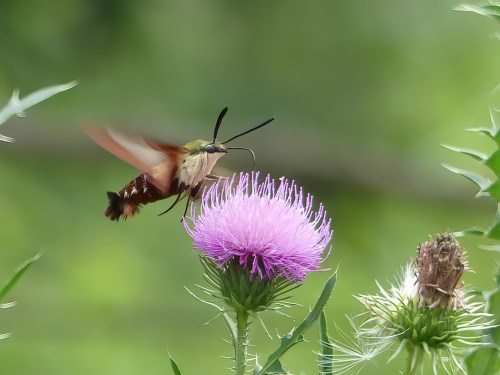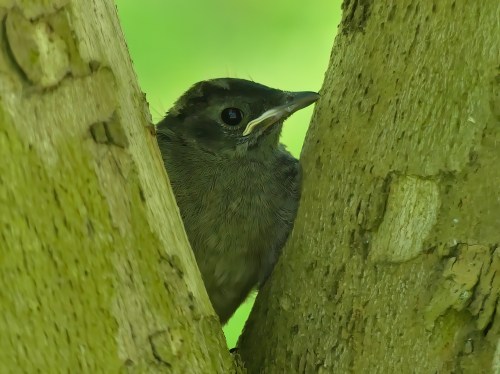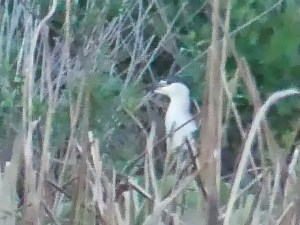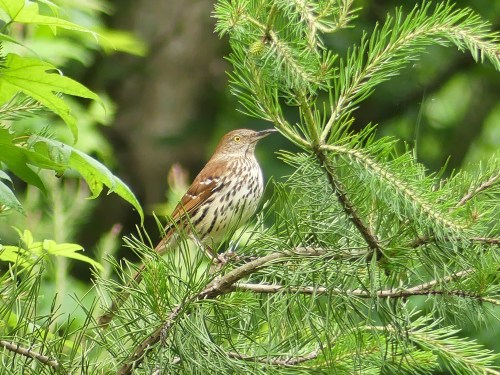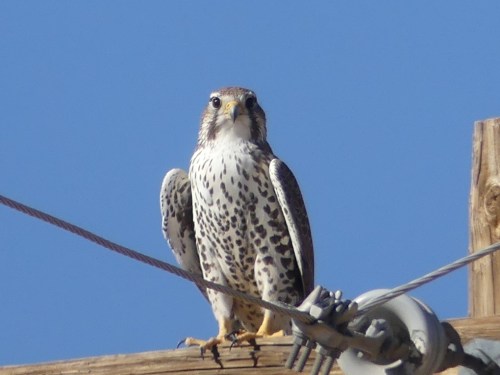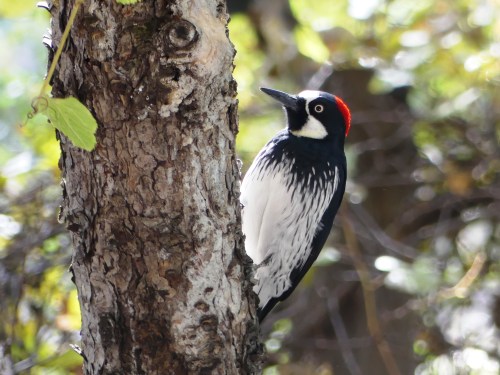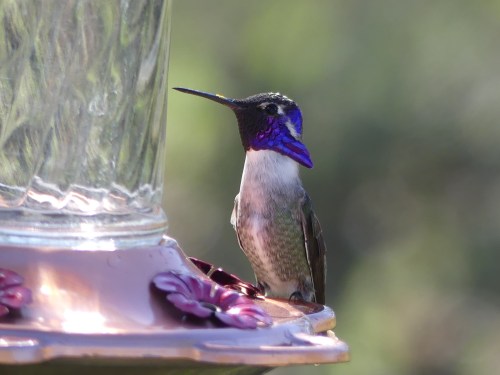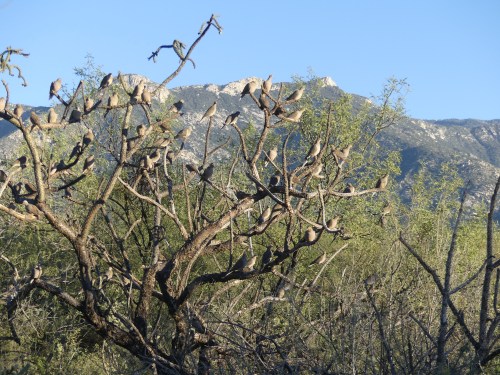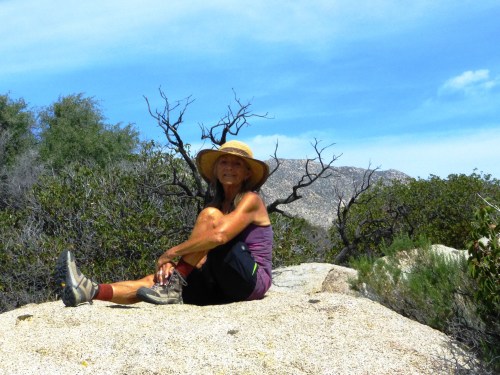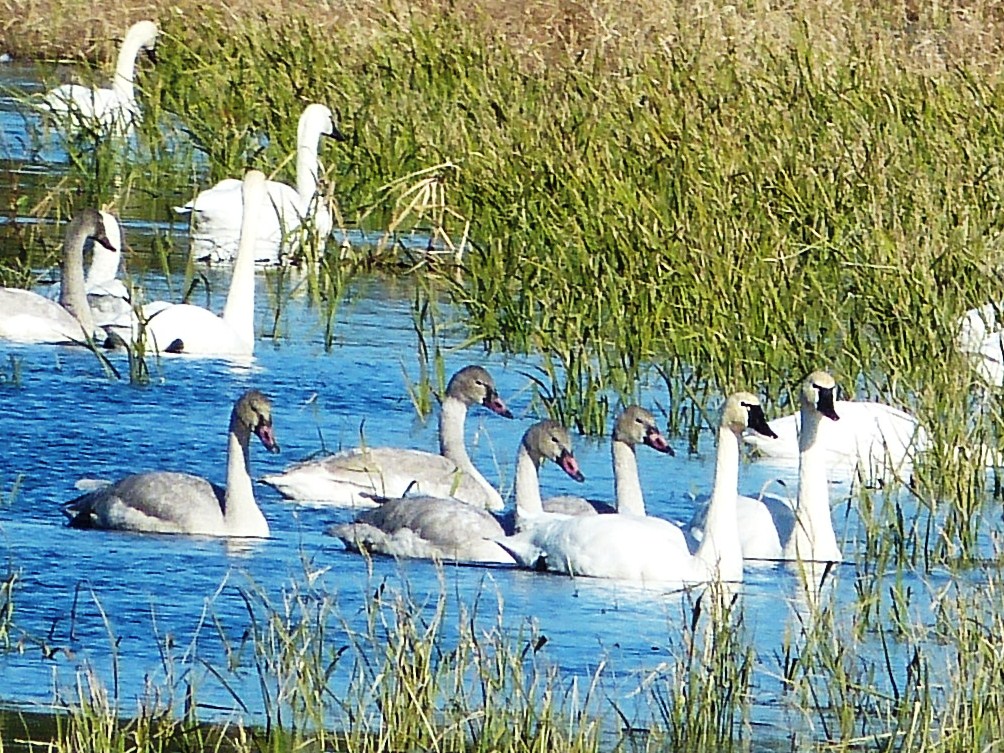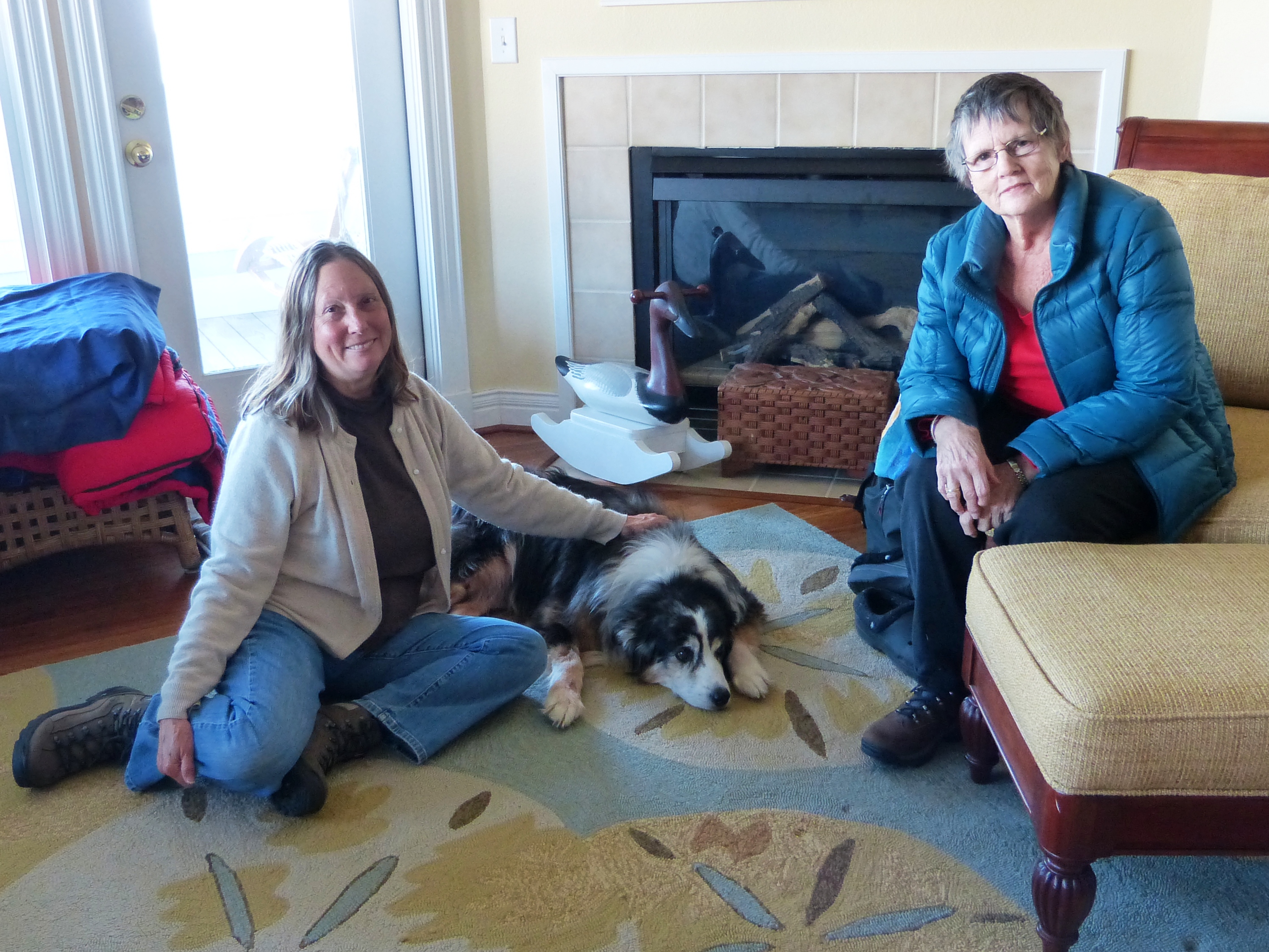
OK, that title might be a slight exaggeration, but the more that time passes, the bigger role that bird plays in my mind. The photo above is not that particular bird, but another of the same species that I photographed in Florida a few years ago. Let’s start back at Thanksgiving 2021. My friends David and Val had invited me to spend the holiday with them in Florida and we had a wonderful time together. The Saturday after Thanksgiving, David took me to Madeira Beach, where I went often with my parents as a child. I was thrilled to see dozens of Sanderlings running on the beach with the waves just as I remembered. I grew up in Pinellas County, where David and Val live now, and it felt like home.
Earlier in the year, I had finally sold the five acres of land near Mount Dora that my late husband Burt and I had bought in 1992 with plans to build a log house. Burt died before we realized that dream and I had held the land mostly for sentimental reasons. For the last few years, I had been thinking about selling the land and using the proceeds to buy a little condo in Florida for a winter home. Thinking as in fantasizing, not actually planning. Simultaneously, I’d finally accepted the fact that my house in NC was not a place to grow old and die. It’s a lovely house, but a split level with no bathroom on the main level. And, with an acre for a yard, it was a lot to care for even if much was left natural.
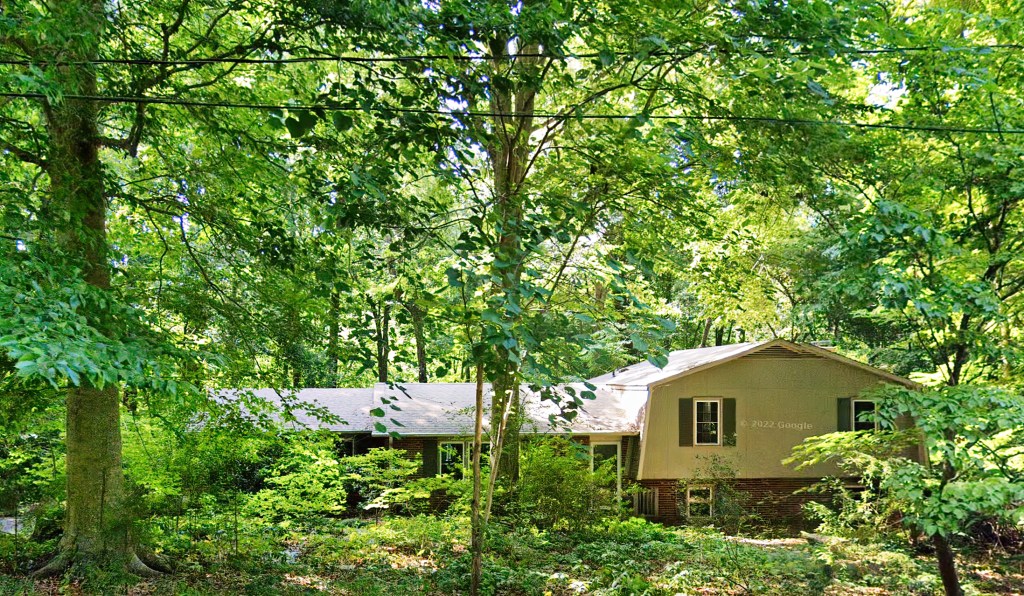
I’m sure that you can see where this is going, but here’s one more clue about the impulsive decision that I was about to make. Burt had loved New York City and he often joked that we moved there because we couldn’t afford a vacation in the Big Apple. Yes, without any planning or conscious forethought, I decided to move to Florida.
I went back to NC and starting browsing real estate listings. A condo that appeared perfect for me showed up and I drove back to Florida in late November for the open house. David, Val, and I were all disappointed and didn’t like it. In hindsight, it was just old with a dated kitchen, wallpaper (ugh), and in general need of a little renovation. We drove around and looked at a couple of other places that afternoon, but nothing was right. Fortunately, Val was off work the coming week, so I stayed a few more days and we continued to look at property while David went back to work. We had quite an education in availability and pricing of local real estate. My expectations changed. Finally, we found a much more expensive townhouse that seemed perfect and I put in an offer for the asking price (remember, this was the height of a seller’s market). Shockingly, it was rejected as there were two other offers and we were all asked for our “final and best” offer. Nope. I wasn’t going to play that game. I was actually relieved as the “perfect” townhouse was in a location that could only be accessed from US-19. I didn’t want to drive on a busy highway every time I went somewhere. I gave up and planned to continue looking online for another try in a few weeks.

On the morning that I was planning to leave, I asked David to drive out to Dunedin causeway with me for coffee and the sunrise. He parked the car facing the water and the first bird that we saw in the dim dawn light was a Black-crowned Night-Heron. We had both seen plenty of these birds, but not out in the open on the beach. We had a magical few minutes sitting there watching the birds and soaking in the sand, water, and rising sun.
The neighborhood with the condo that I had come down to see was between the causeway and David’s house. I spontaneously asked if we could drive by. My heart ached. The neighborhood was gorgeous and the location could not have been more perfect. “I want to see it again” I announced. My realtor was doubtful that it was possible we could see it on such short notice, but she managed to make arrangements for another viewing that afternoon. Val and I had the same reaction, it wasn’t as bad as we’d remembered. And, it certainly didn’t have any flaws that could not be fixed with $60,000, the difference in price between “my” condo and the $400,000 “perfect” townhouse. A couple of days later, I had a contract with the closing set for January.

The year since then has been quite interesting. I have driven back and forth between Florida and North Carolina too many times to count. In NC, I worked on cleaning out 24 years worth of accumulated stuff. While not a hoarder, I readily confess to being a pack-rat. It’s what happens when you are raised by people who lived through the depression. “Don’t throw that away. You might need it someday.” So, I still own the NC house, but hope to finish the clean-out and sell it next spring.
In Florida, I enjoyed time with good friends and exploring new places and activities. David and I went to the causeway a few times together and he walked with me during warm-ups and cool-downs for his runs. One day when he started running, I just spontaneously started running after him. I’m not quite sure what happened next. All I remember is that David signed both of us up for the “Freakin’ Hot 5K” in August and took me to buy running shoes.
I was as surprised as you are. I had tried to run a few times when I was younger and just could not do it. This time, I wasn’t fast and I couldn’t run for long, but I was doing it. At first it was run 30 seconds, walk 2 minutes, and repeat. I decided that I could do anything, no matter how painful, for 30 seconds. I was mainly motivated by my ophthalmologist who had told me that regular exercise might bring down my eye pressure a little. I didn’t want to go blind from my glaucoma or diabetes as my mother had, so that was hugely important to me. And, running would be good for my general health. But, I did not love it. I didn’t even like it while I was doing it. I think that I used some four-letter words for added motivation during the first few months. And, then it got easier and started to feel good. Maybe not so good while actually running, but the feeling after stopping was pure bliss.
I was a bit apprehensive about race day, but it turned out to be as much fun as David had promised. Being with all those other people running and having fun was exhilarating. I had had fantasies about even getting a medal, but neither David nor I thought it would be possible. There are amazing athletes of every age competing in these events. Shockingly, however, I came in third in my age/gender category (out of six). It was extremely motivating and I couldn’t wait for the next event. David said that it was a quirk that I placed and to not expect it again soon. But, he excitedly added that I would soon “age up” and then have better chances of winning.



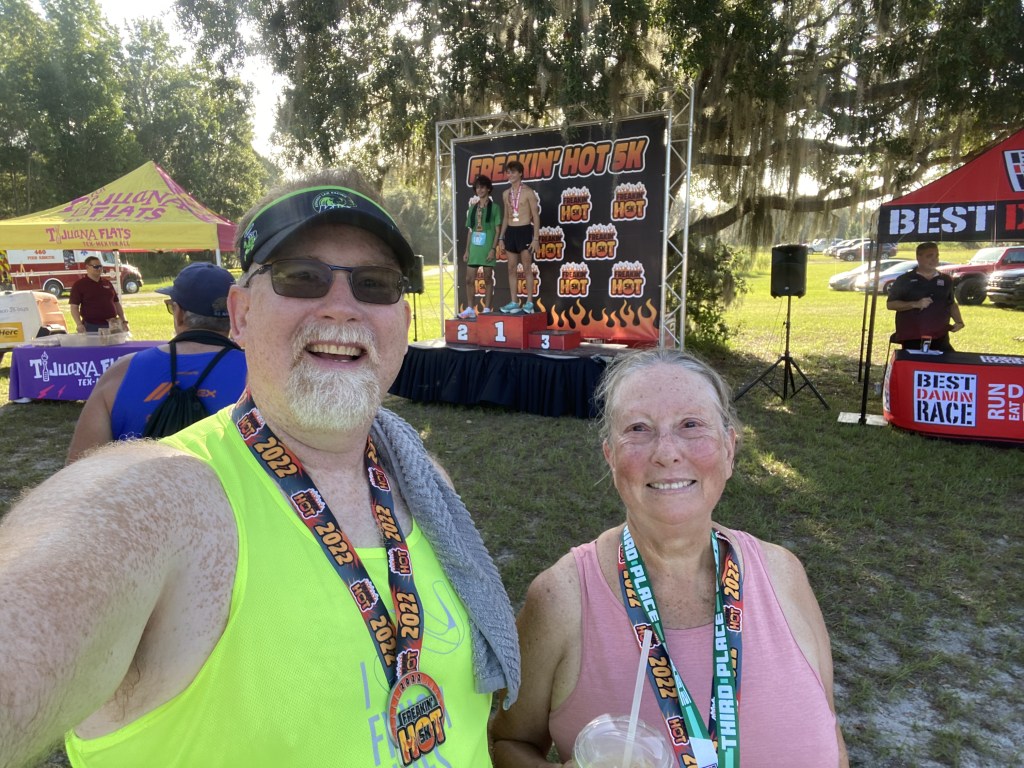
I went back to NC after the Freakin’ Hot and had difficulty running by myself (well, I didn’t). But, as I write this, I’m back in Florida and we are now training for the next 5K, the Best Damn Race in February. I even enjoyed our recent run along the gulf. Yes, even the actual running part.
I’ve also done some birding in Florida this year, attended “Moth Night” (the Southern Flannel Moth below was a favorite) and a “Botany Walk” at Brooker Creek Preserve, and found some interesting new parks. Next on the list is learning to ride a bike again and swimming and kayaking in the gulf. I think this is going to work. I’ve not had a single moment of regret for my impulsive decision last Thanksgiving.






